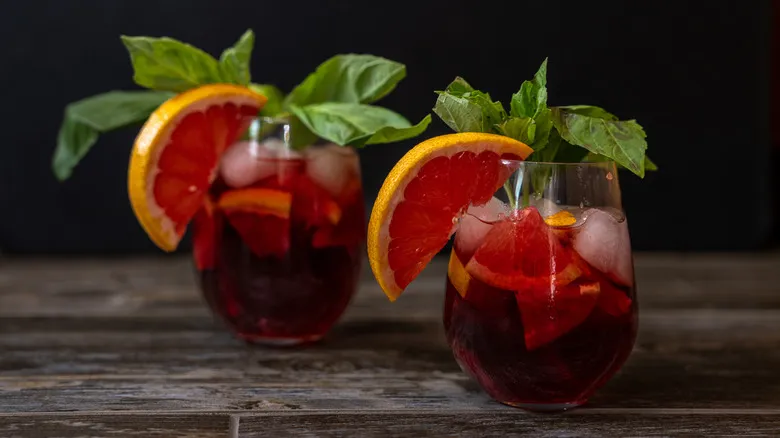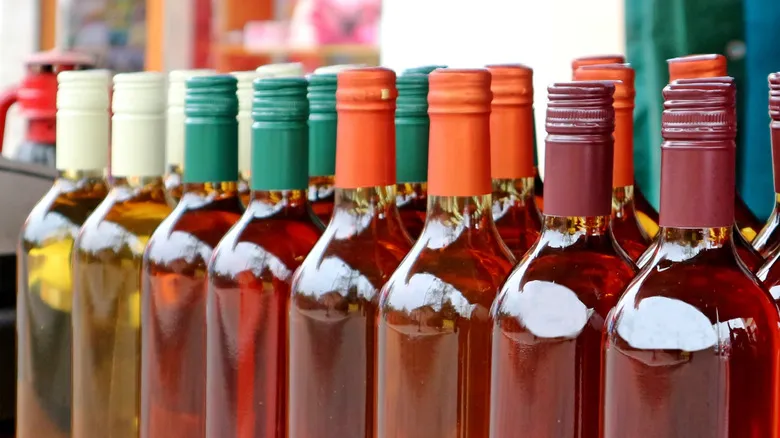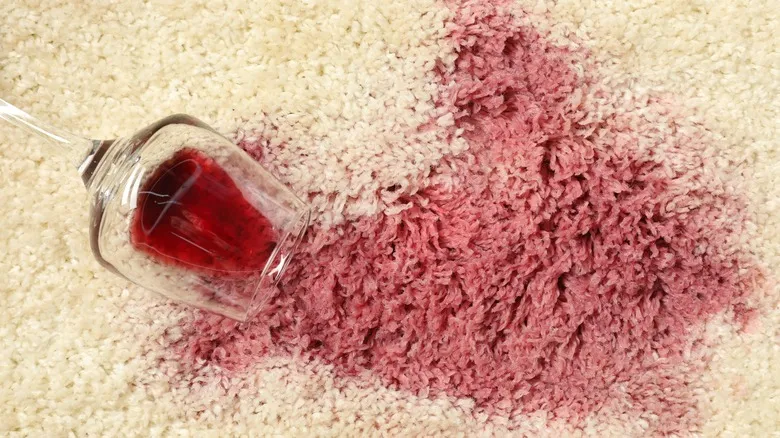For red sangria, stay away from heavy tannins

A refreshing, chilled red sangria is perfect for a warm day, but since it’s best enjoyed cold, it’s important to choose a base wine with low tannins. Tannins are the astringent compounds that can give certain red wines a heavier texture and also serve as preservatives. Wines made from grapes with thicker skins, like Cabernet Sauvignon or Merlot, tend to be more tannic compared to those made from thinner-skinned varieties, such as Pinot Noir. Chilling highly tannic wines can make the tannins taste more metallic and intensify the dry-mouth feeling they create, which is not ideal for a fruity sangria.
For this reason, opt for a light- to medium-bodied red wine that can be chilled on its own. If you want to stay true to tradition, consider selecting a wine from Spain's Rioja region, known for its rich history and renowned blends made from Tempranillo and Garnacha grapes. Other Spanish or Portuguese wines are also great choices, and if you prioritize accessibility over region, any light- or medium-bodied red wine blend under $30 will work well for a delicious sangria.
Keep white sangria light and bright with a crisp wine

White wines are generally crisper and more aromatic than red wines, featuring recurring notes of citrus, stone fruits, and green apples across various types, making them ideal for a refreshing summer sangria. When selecting a wine for your cocktail, avoid fuller-bodied varieties like Chardonnay, which are often described as buttery or creamy, particularly when produced in warmer regions or aged in oak barrels. Instead, choose lighter-bodied, fruity wines that aren't overly sweet, such as Pinot Grigio or Sauvignon Blanc, or even an affordable white blend. While some novice wine drinkers may confuse sweetness with fruitiness, they are actually two different characteristics, and many dry wines can be quite fruit-forward. Extra points if you discover a fantastic Spanish white, like Verdejo or Rioja Blanco, that has the right level of acidity.
Many sangria enthusiasts enjoy a bit of fizz in their drink as well. If you’re one of them, consider replacing regular white wine with Cava, the Spanish sparkling wine that resembles Champagne. You can create a delightful, bubbly sangria using Cava, orange juice, and orange liqueur—no seltzer required!
Recommended

What Exactly Are Tannins And How Do They Impact Your Wine?

Why You Should Add A Few Sprinkles Of Salt To Bitter Beers

Mead Vs Wine: Are They The Same Thing?

For Red Wine Stains, Club Soda Is Your Friend
Next up

